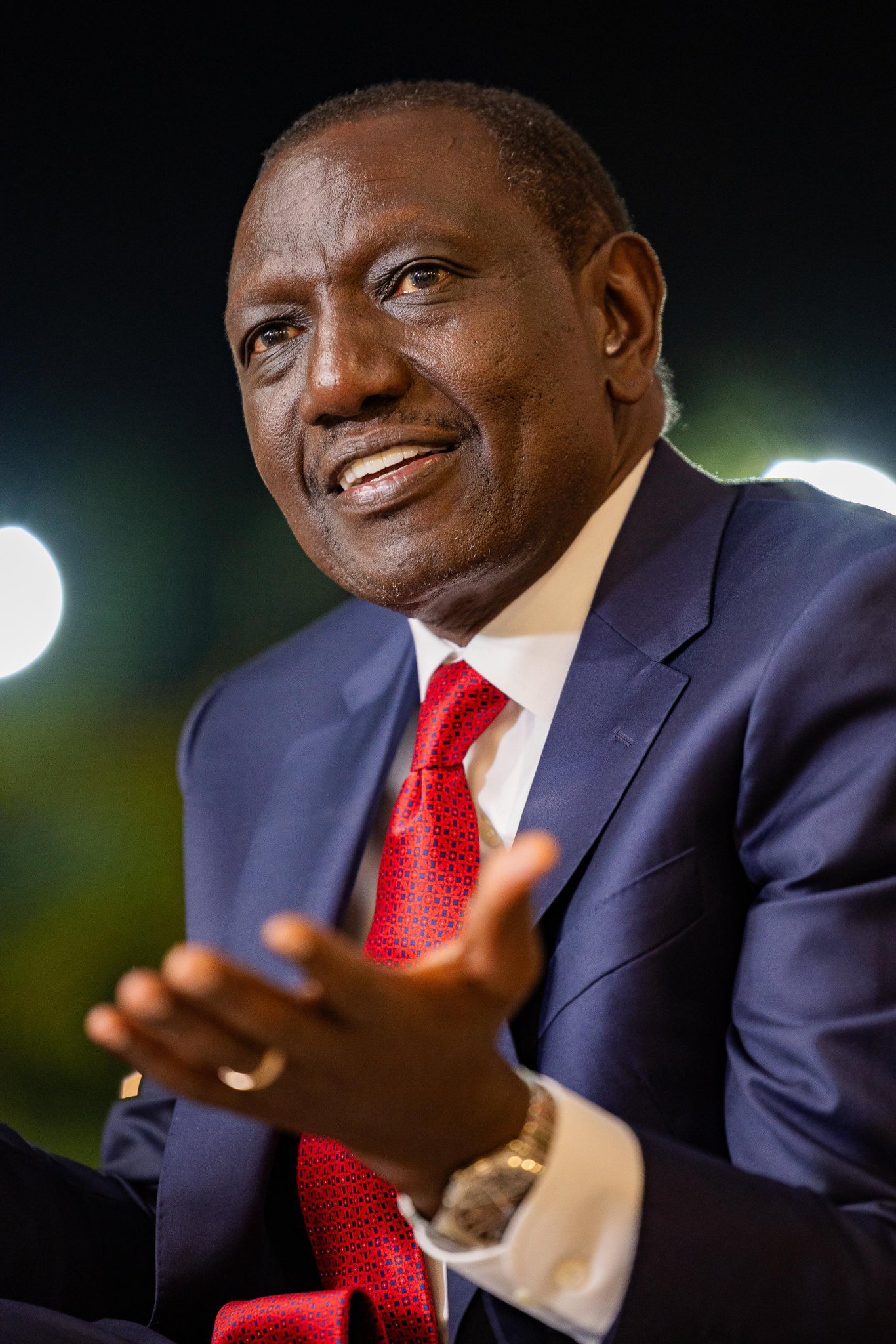By Michael Mundia Kamau
President William Ruto of Kenya nominated additional members to his Cabinet on 24th July 2024, including four members of the opposition Orange Democratic Movement (ODM), the four being, Deputy Leader of ODM, Wycliff Oaranya, Deputy Leader of ODM, Ali Hassan Joho, Ugunja constituency Member of Parliament, Opiyo Wandayi, and Nominated Member of Parliament, John Mbadi.
The lawfully and constitutionally recognised Kenya Government currently in place, is that of President William Ruto and his Kenya Kwanza Alliance. Any extraordinary alteration, or change, to the current Kenya Government, would require ratification in law.
For example, Kenya’s General Elections of 2007 were held on 27th December 2007. On 29th December 2007, what was then known as the Electoral Commission of Kenya (ECK), declared Mwai Kibaki the winner of the presidential election, a declaration that was immediately disputed by Raila Odinga and the Orange Democratic Movement (ODM).
Kenya almost went to civil war over the disputed presidential election of 27th December 2007, and towards resolving the dispute and averting the possibility of civil war, the then newly elected Kenya Parliament met in January 2008 to approve and endorse the formation of a committee of eminent persons, to oversee talks between Mwai Kibaki’s Party of National Unity (PNU) and Raila Odinga’s Orange Democratic Movement (ODM). What followed indeed, was the formation of a committee of eminent persons that was chaired by Dr. Kofi Annan, Secretary-General of the United Nations from 1997 to 2006.
Dr. Kofi Annan and his committee of eminent persons was able to resolve the dispute between Mwai Kibaki’s Party of National Unity (PNU) and Raila Odinga’s Orange Democratic Movement (ODM), resulting in the formation of a Government of National Unity in Kenya in February 2008.
Of key importance to note here is that the Dr. Kofi Annan and his committee of eminent persons derived their authority to resolve the dispute between Mwai Kibaki’s Party of National Unity (PNU) and Raila Odinga’s Orange Democratic Movement (ODM), from a law passed by the Kenya Parliament in January 2008.
Where did President William Ruto derive the authority to nominate four members of the opposition ODM to his Kenya Kwanza Alliance Government? Did all the political parties that constitute the Kenya Kwanza Alliance, hold Special General Meetings where the different party memberships endorsed and ratified the decision to include the Orange Democratic Movement (ODM) in the Kenya Kwanza Alliance Government? Were representatives of Kenya’s Registrar of Political Parties present at these different Special General Meetings to ensure that they were procedural and in line with the law?
Similarly, Raila Odinga’s Orange Democratic Movement (ODM) is part of a coalition of parties known as the Azimio la Umoja-One Kenya Alliance. Were similar Special General Meetings held by the parties that constitute the Azimio la Umoja-One Kenya Alliance, to approve the formation of a “Coalition Kenya Government” with the Kenya Kwanza Alliance? Were representatives from the Office of Kenya’s Registrar of Political Parties present, as observers, at these different Special General Meetings of the parties that make up the Azimio la Umoja-One Kenya Alliance?
President William Ruto himself, was declared President-elect of Kenya by the Independent Electoral and Boundaries Commission (IEBC) on 15th August 2022, following Kenya’s General Elections of 9th August 2022. William Ruto’s declaration as President-elect was challenged and a dispute lodged with the Supreme Court of Kenya, following which the Supreme Court of Kenya made a ruling on 5th September 2022 confirming the decision and declaration of the Independent Electoral and Boundaries Commission (IEBC) of 15th August 2022, and following which William Ruto was sworn-in as Kenya’s 5th President on 13th September 2022. This is the authority on which William Ruto is Kenya’s current President. Where is the authority on which President William Ruto nominated four members of the Orange Democratic Movement (ODM) to his Cabinet on 24th July 2024?
Another example related to the one above of the formation of a Government of National Unity in Kenya in February 2008, is that of the merger of the Kenya African National Union (KANU) and National Development Party (NDP) political parties in March 2002, at the auditorium of Kasarani Stadium, Nairobi, Kenya. The auditorium of Kasarani Staium was full to capacity with delegates from the Kenya African National Union (KANU) and National Development Party (NDP), including the top officials then of both parties, and including KANU Chairman and Kenya’s then President, Daniel T. arap Moi, and the then NDP leader, Raila Odinga.
President William Ruto, on 24th July 2024, should have announced his “Coalition Cabinet” in a similar environment and similar setting to that of the KANU-NDP merger of March 2002, in an environment and setting filled to capacity with delegates of the Kenya Kwanza Alliance, and delegates, not just of the Orange Democratic Movement (ODM), but of the Azimio la Umoja-One Kenya Alliance in it’s entirety. This was not the case on 24th July 2024.
A illegality of monumental proportions was committed in Kenya on 24th July 2024, a trangression of monumental proportions was committed in Kenya on 24th July 2024. No one can plead innocence in the matter, no can claim ignorance of the law.
When the Electoral Commission of Kenya (ECK) declared Mwai Kibaki President of Kenya on 29th December 2007, Raila Odinga of ODM termed the ECK declaration a “Civilian Coup,” and the announcement of a “Coalition Cabinet” in Kenya on 24th July 2024, was similarly a “Civilian Coup.” There are three arms of the Kenya Government, that is, the Executive, the Judiciary, and Parliament, who in the circumstances, are accessories before the fact, and after the fact, of what transpired in Kenya on 24th July 2024. An accessory before the fact, and after the fact, in law, is an individual, or individuals, who are party to a trangression.
Consequently, the Kenya Government, in it’s entirety, the entire Executive (including the 47 County Governments), the Judiciary, and Parliament, should immediately stand dissolved, for being party to a “Civilian Coup” in Kenya on 24th July 2024. All political parties in Kenya should also immediately stand resolved for failing to avert the “Civilian Coup” in Kenya of 24th July 2024.
Who will therefore govern Kenya in the absence of the three arms of the Kenya Government?
The Head of the Civil Service should immediately be declared Acting President of Kenya, for a period not shorter than two years, and not longer than three years, to enable continuity in Kenya, and to enable the reconstitution of the three arms of the Kenya Government, between the period 2024 and 2027.
The Kenyan Civil Service, and it’s Head, play a central role in the governance of Kenya. Four examples of this in Kenyan History, are:
(i). Geoffrey Karekia Kareithi (G.K. Kareithi), was Head of the Kenyan Civil Service when Kenya’s 1st President, Jomo Kenyatta, passed away at 3:30 a.m in the morning on Tuesday, 22nd August 1978. G.K. Kareithi did an excellent job in the coordination of a smooth transition of power from Jomo Kenyatta to Kenya’s then Vice President (Kenya’s then Deputy President), Daniel T. arap Moi, by amongst other things, tracing and notifying all Kenya Cabinet Ministers at the time, and arranging for an emergency Cabinet meeting, notifying all Provicial Commissioners (all Regional County Coordinators) of the time, and notifying all top security chiefs in Kenya of the time. Mind you, there were no cell phones, nor internet, in those days.
President Jomo Kenyatta passed away at State House, Mombasa, Kenya, at 3:30 a.m. in the morning on Tuesday, 22nd August 1978, and approximately twelve hours later at State House, Nairobi, Kenya, Kenya’s then Chief Justice, Sir James Wicks, swore-in Vice President Daniel T. arap Moi as Kenya’s Acting President.
What is one of the things, therefore, that history will remember Geoffrey Karekia Kareithi (G.K. Kareithi) for? G.K. Kareithi executed an excellent, smooth and peaceful transfer of power in Kenya on 22nd August 1978, G.K. Kareithi, effectively, was the “de facto” President of Kenya for a period of about twelve hours, between 3:30 a.m. in the morning on 22nd August 1978, and 3:00 p.m. in the afternooon on 22nd August 1978;
(ii). Simeon Nyachae, was the third Head of the Civil Service to serve under Kenya’s 2nd President, Daniel T. arap Moi, and it was during Simeon Nyachae’s tenure as Head of the Civil Service, that the high profile Sessional Paper No. 1 of 1986 (“District Focus for Rural Development”), was unveiled in the year 1986. Several development projects were launched across Kenya with the unveiling of Sessional Paper No. 1 of 1986 (“District Focus for Rural Development”).
It was Simeon Nyachae and his office that coordinated Sessional Paper No. 1 of 1986 (“District Focus for Rural Development”), elevating the stature, power and prestige of Simeon Nyachae and his office, to the point that Simeon Nyachae acquired the nickname “The Prime Minister”;
(iii). Kenya’s 3rd President, Mwai Kibaki, dissolved the Kenya Cabinet in November 2005, following the 2005 referendum on a new Kenya Constitution, which Mwai Kibaki, and his camp (“Banana”), lost to Raila Odinga and his camp (“Orange”). For the two weeks before a new Kenya Cabinet was constituted, Permanent Secretaries (Principal Secretaries), ran the Kenya Government. Permanent Secretaries (Principal Secretaries), report to the Head of the Civil Service.
Additionally, Francis Kimemia, was Head of the Civil Service during the transition of power from Kenya’s 3rd President, Mwai Kibaki, to Kenya’s 4th President, Uhuru Kenyatta, and Francis Kimemia, like G.K. Kareithi above, was notable during this transitional period of 4th March 2013 to 9th April 2013, as the “de facto” President of Kenya;
(iv). Kenya’s 5th President, William Ruto, dissolved his Cabinet on 11th July 2024, since when Permanent Secretaries (Principal Secretaries), have been running the Kenya Government. As mentioned, Permanent Secretaries (Principal Secretaries), report to the Head of the Civil Service.
So the three arms of the current Kenya Government, in their entirety, including President William Ruto, should be asked to immediately “stand down” for the “Civilian Coup” perpetrated in Kenya on 24th July 2024, and Kenya’s current Head of the Civil Service, Felix Koskei, should equally be immediately installed as Kenya’s Acting President for a period not shorter than two years, and not exceeding three years, for the purposes of continuity, and for the enabling of the reconstitution of the three arms of the Kenya Government, in the period between 2024 and 2027.
Kenya Insights allows guest blogging, if you want to be published on Kenya’s most authoritative and accurate blog, have an expose, news TIPS, story angles, human interest stories, drop us an email on [email protected] or via Telegram


 Business2 weeks ago
Business2 weeks ago
 Business1 week ago
Business1 week ago
 Business1 week ago
Business1 week ago
 News1 week ago
News1 week ago
 Investigations2 weeks ago
Investigations2 weeks ago
 Africa1 week ago
Africa1 week ago
 Investigations2 weeks ago
Investigations2 weeks ago
 Sports2 weeks ago
Sports2 weeks ago










